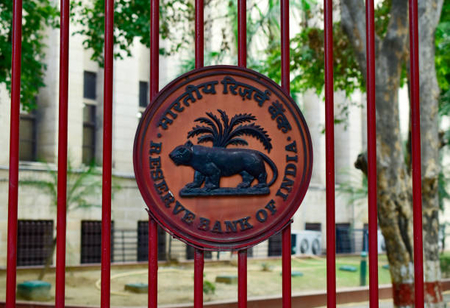RBI Affronts Critical Challenge With The Ongoing Israel-Palestine Conflict
By Consultants Review Team

Pertaining the estimates for crude oil prices at USD 85 per barrel and the rupee's exchange rate of 82.5 to the US dollar, the ongoing Israel-Palestine conflict provides a serious challenge to the Reserve Bank of India's (RBI), both of which have a direct impact on inflation figures.
Crude oil prices soared to USD 88.76 per barrel a day after Israel retaliated. Traders are aiming for $90, which will open the door to a move to $95 a barrel, which it reached last week. The rupee is presently trading at 83.28 per US dollar, which is higher than the RBI's forecast.
"Though the conflict does not pose an immediate threat to oil flows, there is a risk of conflict between the US and Iran because it is expected that the attack was backed by Iran," says Ravindra Rao, VP-Head Commodity Research, Kotak Securities Ltd. According to the RBI, if crude oil prices rise 10% over the assumption, domestic inflation will rise by 30 basis points and growth will slow by 15 basis points.
In the last two months, oil prices have been quite erratic. According to the RBI's October monetary policy announcement, crude oil prices rose considerably in September to around $95 per barrel in response to extended supply curbs by key producing countries. This increase was caused by high demand and supply cuts. Two of the world's largest oil producers, Saudi Arabia and Russia, have opted to maintain voluntary production restrictions, which are expected to raise prices in the near future.
"An escalation of geopolitical hostilities and further production cuts by OPEC plus amidst strong demand pose upside risks to global crude prices," the Reserve Bank of India said in its policy statement. This declaration, which was part of the monetary policy, was made a day before Hamas launched an attack on Israel.
Since the August decision, the rupee has declined by about 50 paise against the US dollar. The rupee was worth roughly 82.73 in August and has since fallen to 83.24 in October. Rising US interest rates and a stronger currency are weighing on the rupee, as FPI outflows outnumber inflows.
In addition, there is a sudden uptrend in the value of the US dollar. The US Dollar Index (USDX), which tracks the US dollar’s strength against a basket of foreign currencies, has experienced a substantial increase over the past two months. Starting from 100 in early August, it has surged by approximately 6 per cent, reaching 106 this month. This upward trend signifies the growing dominance of the US dollar in relation to major global currencies.
Several variables contribute to the US dollar's strength. One important reason is the US Federal Reserve's signal that another interest rate hike is possible. Short-term Fed rates are already at their highest level in 22 years. Furthermore, geopolitical tensions between Russia and Ukraine, as well as China and the United States, are causing investors to seek refuge in safe-haven assets such as the US dollar.
The current account deficit in India is anticipated to be strained. The trade deficit was $37.49 billion in the first five months of fiscal year 2023-24, a significant improvement from the previous period when it was $60 billion. Data for CAD is only available up until the June quarter. The CAD was lower than projected in the first quarter of 2023-24 (April to June), accounting for only 1.1 percent of GDP. This represents a considerable decrease from the 2.1 percent of GDP recorded in the same quarter last year. However, things could change in the second and third quarters of the current fiscal year. It is critical to understand that the external situation is likely to alter as a result of the sudden high crude oil prices.



